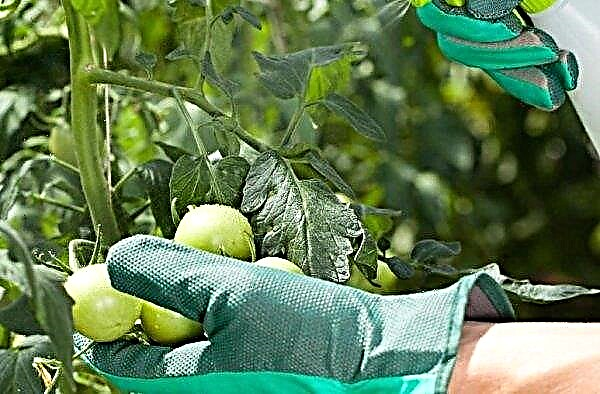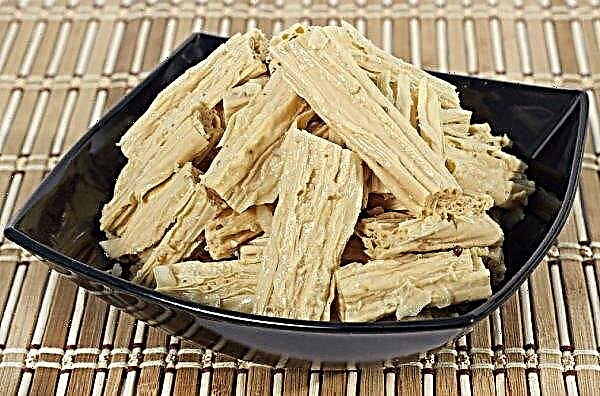Oyster mushrooms are quite popular and inexpensive mushrooms, and although the species in question does not differ in special taste, it is widely used in cooking. Before preparing this product, you must carefully consider the selection and preparation of oyster mushrooms, as there are frequent cases of poisoning with this type of mushroom.
Causes of poisoning
Despite the fact that the fruiting body in question is not included in the category of poisonous or inedible mushrooms, it should be remembered that there is a possibility of poisoning with oyster mushrooms (both wild-growing and cultivated).
Among the most common reasons are:
- Artificial cultivation of mushrooms in adverse conditions.
- Violation of the rules of cultivation (improper treatment with chemicals).
- Wrong place to gather wild fruiting bodies (near plants, roads, contaminated areas).
- Violation of the technology of salting oyster mushrooms.
- Hurry during mushroom harvest. There is a chance to mix up and quickly pick a poisonous mushroom.
Important! The pulp of the fruiting body in question has the ability to absorb as much as possible all the substances that come into contact with it. Therefore a poisonous mushroom, caught in a basket with oyster mushrooms, it can “saturate” edible specimens with toxins.
To harvest the mushroom picker needs to decide on the place - it must be environmentally friendly. After mushroom "hunting" it is recommended to conduct a thorough sorting of the mushrooms - once, or even twice.
Symptoms of Poisoning
Poisoning by the considered fruiting bodies does not have any specific symptoms. Signs of poisoning directly depend on various factors and situations.

Mushroom poisoning caused by errors in the preservation of oyster mushrooms, usually manifests itself in this way:
- temperature increase up to + 38 ° С and higher;
- nausea and vomiting;
- diarrhea;
- dizziness, hallucination, loss of consciousness, possible cramps;
- discoordination;
- dehydration;
- pain during swallowing.
Important! According to doctors, in 95% of botulism cases, the cause is canned mushrooms at home.
Also, improper canning of oyster mushrooms can cause the development of botulism, the bacteria of which, entering the body, can manifest themselves as follows:
- gastric colic, pain in the intestines;
- vomiting
- "Blurry" in the eyes, vision problems;
- pain in the joints and muscles;
- painful swallowing, suffocation symptoms.
Poisoning with oyster mushrooms collected in an insufficiently ecologically clean area is characterized by other signs:
- nausea and vomiting;
- drowsiness, weakness;
- heaviness in the occipital area;
- headache or dizziness.
 The most harmless mushroom poisoning is considered to be overeating of "clean" (not polluted) oyster mushrooms. Excessive consumption is usually accompanied by colic and indigestion.
The most harmless mushroom poisoning is considered to be overeating of "clean" (not polluted) oyster mushrooms. Excessive consumption is usually accompanied by colic and indigestion.
First aid for poisoning
The longer the body will be poisoned by a toxic substance, the worse the consequences will be, so at the first signs of oyster poisoning, you need to call a doctor. For various reasons, the doctor may be delayed, so it is very important to provide first aid.
Did you know? Maximum Counted fruit bodies in one nest oyster mushroom reached 473 units.
At the first symptoms, the victim must:
- Drink 1.5–2 liters of warm boiled water. A manganese solution will also be a good option. It is recommended to induce vomiting by slightly pressing on the root of the tongue. Such washing is performed at least three times. Stopping the procedure is possible only when the effluent does not discolour.
- After flushing, the patient should take absorbent drugs (activated carbon, Smecta, Enterosgel).
- To restore the water balance of the body affected by dehydration, the patient needs regular drinking. It is recommended to take 30 ml of boiled water every quarter of an hour. A lemon-honey drink is also considered a good remedy.
- With delayed symptoms, washing will not be enough - this is due to the penetration of toxins into the digestive tract, so you should resort to the use of an enema.
- In case of temperature increase the victim needs to take "Nurofen", "Ibuprofen" or other antipyretic drugs.
 The provision of first aid can fulfill the main task in the treatment of intoxication of the body. Proper action can put the patient on his feet even before the doctor arrives.
The provision of first aid can fulfill the main task in the treatment of intoxication of the body. Proper action can put the patient on his feet even before the doctor arrives.
Consequences of poisoning
Usually, if the toxin has been removed from the body, the next day the patient’s strength will begin to recover, and the gastrointestinal tract will gradually normalize.
- Severe cases of poisoning can lead to the following consequences:
- In case of intoxication with an inedible fungus that has got into the oyster mushrooms, the result directly depends on the degree of intensity of the toxins and the effect of the poison itself as a whole. The patient may experience pancreatitis, renal failure, and other diseases of the internal organs.
- If the microbes of Clostridium botullini enter the body, botulism poisoning can occur, which affects the cardiovascular system, as well as the kidneys and liver. Botulism bacteria can not only affect various organs, but can also lead to death.
In order to facilitate the course of treatment for the victim from exposure to fungal toxins, even with the slightest sensation of intoxication, he must necessarily carry out pre-medical care procedures in a timely manner.
Poison Prevention
Everyone who deals with mushrooms, including oyster mushrooms, should know the basic rules for collecting and preparing this product.
To avoid intoxication, you should adhere to such recommendations:
- It is unacceptable to collect the food in question near the roads, landfills and factories. It is desirable to carry out the collection in the depths of the forest, or to grow oyster mushrooms on their own.
- If you went to pick mushrooms in the forest, you should be very careful that the poisoned mushroom does not get into the basket. At home, it is necessary to sort fruit bodies.
- Do not buy mushrooms in unverified places on the market or by the road. You need to be very careful about dried oyster mushrooms, since it is difficult to determine the presence of a poisonous mushroom among “good” foods.
- Buying or collecting fruiting bodies, you need to pay attention to their appearance - the absence of any stains or rot.
- Caution should be taken to canned oyster mushrooms. The finished product purchased must comply with the standards and expiration date. An independent salting procedure should be carried out according to all the rules of pickling and preservation. You can not expire the shelf life of both closed and open conservation, such products must be disposed of immediately.
- Eating mushrooms should be in moderation, since overeating can also cause problems in the digestive tract.
- Despite allegations, that oyster mushrooms can be eaten raw, it is recommended to use them in cooked form.
Did you know? In many European countries in the post-war period, the species of mushrooms in question became a real salvation in times of famine. In those years of devastation, Germany was actively engaged in the cultivation of oyster mushrooms.
Thus, oyster mushrooms are considered safe mushrooms, but due to their absorbent properties they can absorb various toxins from the environment. Accumulated harmful substances, as well as a violation of the technology of cultivation or conservation, can cause poisoning. Everyone should be responsible for the collection, purchase and preparation of oyster mushrooms. In case of intoxication, the patient must be provided with first aid.












